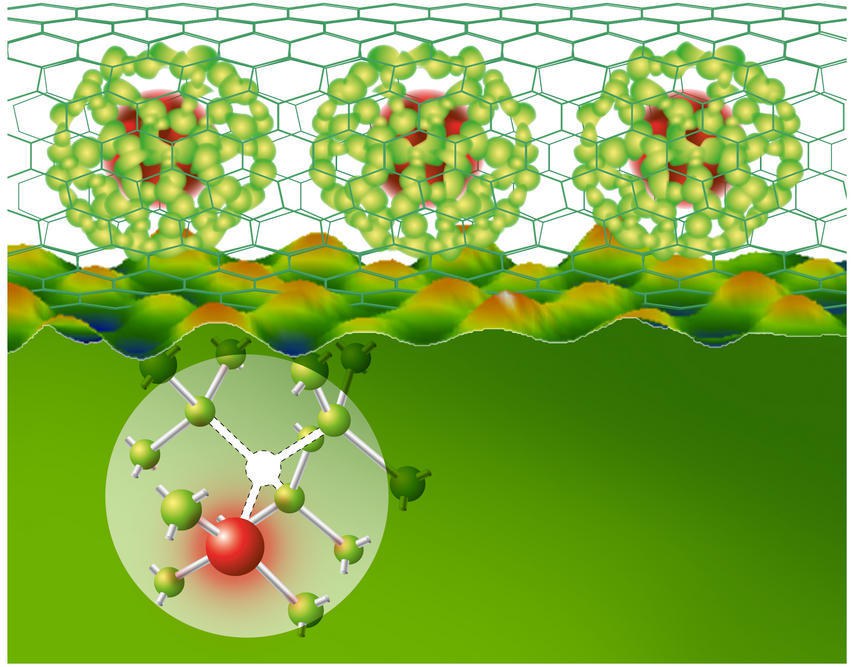New Joint Project: PGI Researchers Work on the Feasibility of Quantum Computing
November 14, 2012
Quantum computers should one day be able to perform certain types of tasks considerably more efficiently than conventional, silicon-based computers. However, there is still a lack of suitable materials available to ensure their viable implementation. The demonstration of the feasibility of a quantum computer on the basis of electron spins is now the objective of a material science joint project currently underway involving Forschungszentrum Jülich and the Universities of Mainz and Osnabrück, supported by the Volkswagen Foundation with € 550,000 over a three-year period.
The project consortium is called upon to lay down the foundations for a quantum computer, based on special fullerenes, football-shaped carbon molecules, in which a nitrogen atom is embedded. The electron spin of this nitrogen atom serves as the qubit, the analogue of a bit in quantum information technology. Fullerenes ensure that the spin remains stable; however, at the same time, they prevent data from being read out directly. This should instead take place via a detour; the fullerenes are placed on diamonds with so-called nitrogen imperfections, so that the qubits interact with them and can then be read out optically.
“One of the challenges of this concept lies in the fact that these endohedral fullerenes are delicate and cannot tolerate the high temperatures which have in the past been necessary during the synthesis of the system”, explains the Jülich sub-project manager Dr. Carola Meyer from the Peter Grünberg Institute, Division of Electronic Properties. She plans to address the problem with the help of tiny nanotubes made from carbon atoms, in which the fullerenes are embedded. Dr. Meyer’s team already has a lot of experience with the synthesis of such “peapod” structures, named after their resemblance to peas in a pod.
“In Jülich, we are planning to construct an installation which can produce peapods at low temperatures which are then arranged onto the diamond”, reports Meyer. This is expected to take place within the framework of a doctoral thesis; a position for a suitable PhD student is currently being advertised. If the synthesis is successful, the project partners hope to be able to observe the coupling of the qubits and the the imperfections during the running phase of the planned project.


Press release concerning the project approval (in German)
